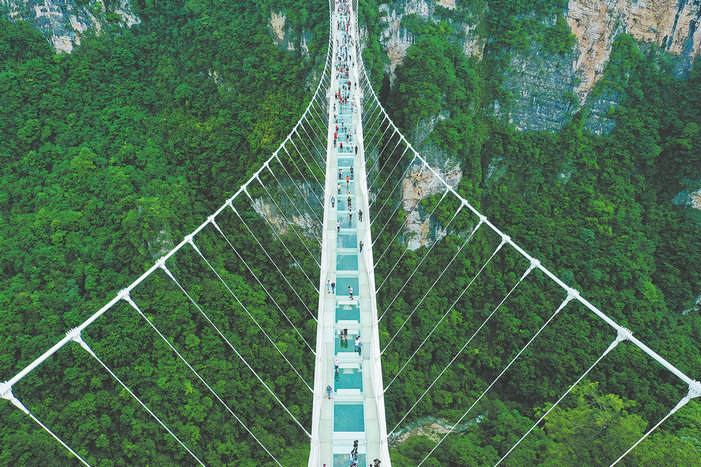Tracking a mountain of history


Out of this world
"Spectacular" is the only word that comes to mind. They are, indeed, out of this world.
Over 3,000 sandstone pillars tower throughout Zhangjiajie, with 1,000 soaring above 200 meters. This uniquely concentrated and pristine landscape was recognized by the global geological community in 2010 as the Zhangjiajie Landform.
Around 380 million years ago, Zhangjiajie submerged beneath the ocean. Tectonic forces eventually lifted the oceanic bedrock above sea level, transforming the area and leaving behind a 500-meter-thick layer of quartzite sandstone.
Over millions of years, water erosion sculpted the sandstone into towering pillars, deep ravines, and canyons. This process was accelerated by the subtropical climate, characterized by high humidity and heavy rainfall. Additionally, wind and temperature fluctuations contributed to the cracking and erosion of the rock formations.
























